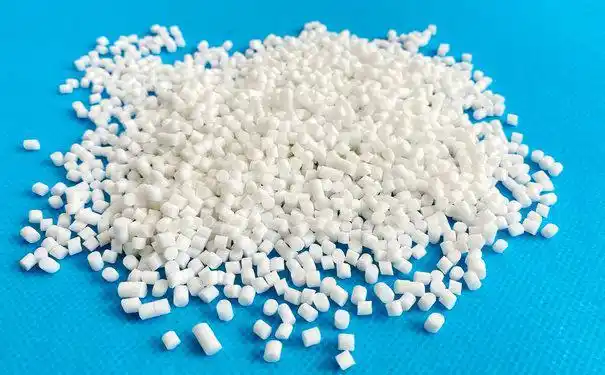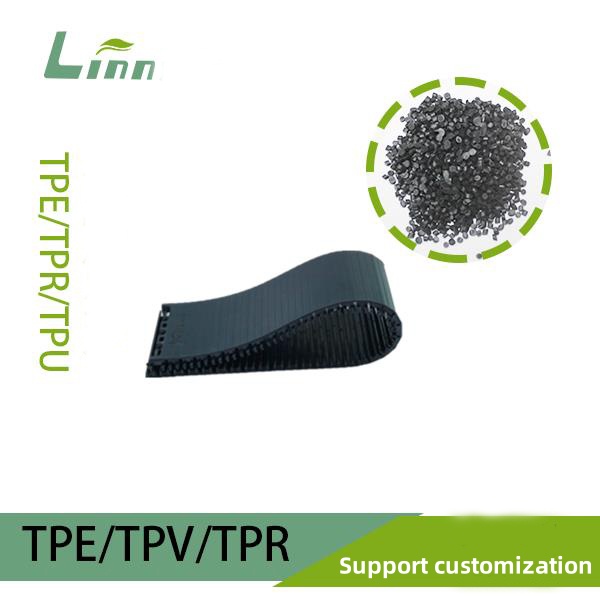Having worked in the plastics and elastomer industry for over 17 years, I’ve spent countless hours helping manufacturers, designers, and end-users navigate the quirks of Thermoplastic Rubber (TPR). From shoe soles to medical grips, TPR’s flexibility and affordability make it a favorite across industries. But one concern I hear often, especially from those making consumer-facing products like sneakers or phone cases, is how long TPR can resist yellowing—that unsightly discoloration that can make a product look aged or cheap. Through my work with factories and material suppliers, I’ve learned what drives TPR’s yellowing, how to measure its resistance, and how to extend its pristine appearance. In this article, I’ll share practical insights and real-world lessons to help you understand how long TPR can stay vibrant and what you can do to keep it that way.

Understanding TPR and Yellowing
TPR, or Thermoplastic Rubber, is a thermoplastic elastomer (TPE) that blends rubber-like elasticity with plastic-like processability. It’s typically based on SBS (styrene-butadiene-styrene) or SEBS (styrene-ethylene-butylene-styrene), mixed with oils, fillers, and additives. While TPR is durable and versatile, its susceptibility to yellowing—a visible shift toward a yellowish hue—can be a drawback, especially for white or light-colored products. Yellowing occurs due to UV exposure, heat, oxidation, or chemical interactions, which break down the material’s molecular structure, particularly in the styrene or butadiene components.
Early in my career, I worked with a sneaker manufacturer whose white TPR soles turned yellow after just a few months of outdoor use. Customers were frustrated, and the brand’s reputation took a hit. After digging into the issue, we found that the TPR lacked proper UV stabilizers, and improper storage accelerated the problem. That experience taught me that yellowing isn’t just a cosmetic issue—it can affect product reliability and customer trust. Let’s explore the factors that determine how long TPR resists yellowing and how to maximize its lifespan.
Factors Affecting TPR Yellowing Resistance
The time TPR resists yellowing depends on its formulation, environment, and usage. Here’s what I’ve learned from years of troubleshooting and testing.
TPR Formulation and Additives
The composition of TPR is the biggest driver of its yellowing resistance. SBS-based TPR is more prone to yellowing because the butadiene component has double bonds that are easily oxidized under UV light or heat. SEBS-based TPR, with its saturated ethylene-butylene structure, is far more resistant, often lasting 2-5 times longer before showing discoloration. Additives like UV stabilizers (e.g., benzotriazoles or HALS—hindered amine light stabilizers) and antioxidants (e.g., phenolic or phosphite-based) can significantly extend resistance.
In my experience, high-quality TPR with robust additives can resist yellowing for 2-5 years under moderate conditions, while low-grade TPR without stabilizers may yellow in 3-6 months. I once advised a toy manufacturer to switch from SBS to SEBS-based TPR with HALS additives for their white figurines, and their products stayed vibrant for over 3 years in retail displays, compared to 6 months with their old formulation.
Environmental Exposure
UV exposure is the primary culprit behind yellowing. Direct sunlight or prolonged indoor lighting (especially fluorescent or LED with UV components) can degrade TPR’s molecular structure, causing discoloration. For example, TPR shoe soles exposed to daily sunlight may yellow in 3-12 months, while indoor-use products like grips or mats can last 2-4 years without noticeable change.
Temperature also plays a role. High heat (above 40°C) accelerates oxidation, speeding up yellowing. In contrast, cooler environments (below 25°C) slow it down. I recall a client whose TPR phone cases yellowed in 4 months when stored in a hot warehouse. Moving storage to a climate-controlled room at 20°C extended their shelf life to 18 months.
Humidity and chemical exposure (e.g., oils, cleaners, or pollutants) can also worsen yellowing. TPR exposed to acidic or alkaline substances may degrade faster, especially if it lacks protective additives. Proper storage and usage are key to minimizing these effects.

Usage and Application
How TPR is used affects its yellowing timeline. Outdoor applications, like shoe soles or garden tools, face constant UV and weather exposure, leading to yellowing in 6 months to 2 years for standard TPR. Indoor applications, like medical grips or appliance seals, can resist yellowing for 3-5 years or more, especially with SEBS-based TPR.
The color of the TPR also matters. White or light-colored TPR shows yellowing more visibly than dark colors, where discoloration is less noticeable. I’ve seen black TPR soles look fine after 3 years of outdoor use, while white soles from the same batch yellowed in 9 months. If aesthetics are critical, choosing darker colors or investing in UV-resistant formulations is a smart move.
Manufacturing and Processing
The processing conditions during TPR production can influence yellowing resistance. Overheating TPR (above 180-200°C) during injection molding or extrusion can degrade its molecular structure, making it more susceptible to yellowing. Proper drying (as I’ve discussed previously) is also crucial—moisture in TPR pellets can cause hydrolysis during processing, weakening the material and accelerating discoloration.
I once worked with a factory whose TPR soles yellowed quickly because they processed the material at 210°C, above the recommended range. Lowering the temperature to 170°C and ensuring proper drying extended the soles’ yellowing resistance from 6 months to 2 years.
Typical Yellowing Resistance Timeline
Based on my experience and industry data, here’s how long TPR typically resists yellowing under different conditions:
High-Quality SEBS-Based TPR (with UV stabilizers): 2-5 years for indoor use, 1-3 years for outdoor use.
Standard SBS-Based TPR (minimal additives): 6 months to 2 years for indoor use, 3-12 months for outdoor use.
White/Light-Colored TPR: 6 months to 2 years, depending on UV exposure and additives.
Dark-Colored TPR: 2-5 years, as yellowing is less visible, though material degradation may still occur.
Here’s a table summarizing TPR yellowing resistance:
|
TPR Type |
Environment |
Yellowing Resistance |
Key Factors |
|---|---|---|---|
|
SEBS-Based TPR |
Indoor/Outdoor |
2-5 years / 1-3 years |
UV stabilizers, antioxidants |
|
SBS-Based TPR |
Indoor/Outdoor |
6 months-2 years / 3-12 months |
Prone to oxidation, needs additives |
|
White/Light TPR |
Indoor/Outdoor |
6 months-2 years / 3-12 months |
Shows yellowing faster, needs HALS |
|
Dark TPR |
Indoor/Outdoor |
2-5 years / 1-3 years |
Yellowing less visible, still degrades |
How to Extend TPR’s Yellowing Resistance
Maximizing TPR’s resistance to yellowing requires careful material selection, proper processing, and smart usage. Here are my top tips, refined from years of working with manufacturers:
1. Choose SEBS-Based TPR with Additives
Opt for SEBS-based TPR over SBS, as its saturated structure resists oxidation better. Look for formulations with UV stabilizers (e.g., HALS or benzotriazoles) and antioxidants (e.g., Irganox from BASF). These can extend yellowing resistance by 2-3 times. Check the technical data sheet (TDS) for additive details. A client of mine switched to SEBS-based TPR with HALS for their white sneaker soles, boosting resistance from 6 months to 2.5 years.
2. Control Processing Conditions
Process TPR at the recommended temperature (typically 160-180°C) to avoid degrading its molecular structure. Ensure pellets are dried to a moisture content below 0.05% (2-4 hours at 70-80°C) to prevent hydrolysis. I’ve seen factories reduce yellowing issues by 50% by optimizing their injection molding temperatures.

3. Store Properly
Store TPR products or raw pellets in a cool, dry, UV-free environment (below 25°C, 40-50% humidity). Use opaque packaging or UV-resistant coatings for finished products. A retailer I advised stopped storing TPR phone cases near shop windows, extending their shelf life from 4 months to 18 months.
4. Apply Protective Coatings
For white or light-colored TPR, consider applying UV-resistant coatings or anti-yellowing sprays after molding. These act as a barrier against UV light and oxidation. A toy manufacturer I worked with used a UV-resistant spray on their TPR figures, doubling their yellowing resistance to 3 years.
5. Limit UV Exposure
For outdoor-use products, advise users to avoid prolonged sunlight exposure. For example, store TPR-soled shoes indoors or in shaded areas when not in use. A customer I spoke with kept their TPR garden tools in a shed, extending their appearance from 9 months to 2 years.
6. Test for Yellowing Resistance
Before committing to a TPR grade, test its yellowing resistance using a UV weathering tester (e.g., QUV chamber) to simulate long-term exposure. This can predict how the material will hold up in real-world conditions. A factory I consulted used QUV testing to select a TPR grade that lasted 4 years without yellowing indoors.
Real-World Challenges and Solutions
Yellowing can be a persistent issue, but here are some common problems I’ve encountered and how to address them:
Rapid Yellowing in Outdoor Use: Outdoor TPR products yellow faster due to UV exposure. Solution: Use SEBS-based TPR with HALS and store products in shaded areas.
Yellowing During Storage: Improper storage (e.g., near windows or in hot warehouses) accelerates yellowing. Solution: Store in cool, dark, dry conditions with opaque packaging.
Inconsistent Yellowing Across Batches: Variations in TPR formulation or processing can cause uneven resistance. Solution: Work with a reputable supplier and ensure consistent processing conditions.
Yellowing in White TPR: Light colors show yellowing more visibly. Solution: Use dark colors for outdoor products or apply UV-resistant coatings for white TPR.
One memorable case involved a sneaker brand whose white TPR soles yellowed in 3 months under store lighting. We switched to an SEBS-based TPR with benzotriazole stabilizers and adjusted their display to avoid direct light, extending the soles’ pristine appearance to 2 years.
Environmental and Safety Considerations
Yellowing doesn’t affect TPR’s functionality, but it can harm a product’s marketability. From an environmental perspective, TPR is recyclable, so yellowed TPR can often be reprocessed into dark-colored products where discoloration isn’t noticeable. However, some TPR formulations contain phthalates or other additives that raise health concerns during recycling. Always check the TDS for additive safety and ensure proper ventilation when processing TPR to avoid inhaling VOCs from degrading additives.
For safety, workers handling TPR should wear gloves and masks during molding or recycling to avoid contact with potential irritants. A factory I advised improved worker safety by installing fume extraction systems near their molding machines, reducing VOC exposure.

My Perspective on TPR Yellowing
After years of working with TPR, I’ve come to see yellowing as a manageable challenge rather than a dealbreaker. With the right formulation—preferably SEBS-based with UV stabilizers and antioxidants—and proper care, TPR can resist yellowing for 2-5 years, even in demanding conditions. Whether you’re making sneakers, grips, or consumer goods, choosing a high-quality TPR grade and optimizing storage and processing is key to maintaining a vibrant, professional appearance. By testing materials, controlling conditions, and educating your team or customers, you can ensure TPR products stay looking fresh for as long as possible.
Related Questions and Answers
Q: Why does my TPR turn yellow so quickly?
A: Rapid yellowing is often due to UV exposure, high heat, or low-quality TPR without stabilizers. Use SEBS-based TPR with HALS and store products in cool, dark conditions.
Q: Can yellowed TPR be restored?
A: Yellowing is a chemical change and can’t be fully reversed. However, cleaning with mild soap or applying a UV-resistant coating can improve appearance for light discoloration.
Q: Is SEBS-based TPR always better than SBS for yellowing resistance?
A: Yes, SEBS is more resistant due to its saturated structure, lasting 2-5 years compared to 6 months-2 years for SBS. Add UV stabilizers for even better performance.
Q: How can I test TPR’s yellowing resistance?
A: Use a QUV weathering tester to simulate UV exposure or expose samples to sunlight for a few weeks. Check the TDS for UV stabilizer details.
Q: Does yellowing affect TPR’s functionality?
A: Yellowing is mostly cosmetic but can indicate material degradation in severe cases. For critical applications, test the material’s mechanical properties after yellowing.
By selecting the right TPR formulation, optimizing processing, and protecting products from UV and heat, you can keep your TPR looking vibrant and extend its marketability for years.





